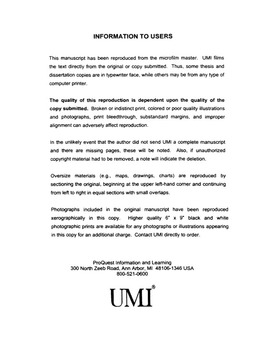| dc.contributor.advisor | Ballard, Jimmy, | en_US |
| dc.contributor.author | Qadan, Maen M. | en_US |
| dc.date.accessioned | 2013-08-16T12:18:35Z | |
| dc.date.available | 2013-08-16T12:18:35Z | |
| dc.date.issued | 2002 | en_US |
| dc.identifier.uri | https://hdl.handle.net/11244/475 | |
| dc.description.abstract | Clostridium sordellii lethal toxin (TcsL) is a large clostridial toxin (LCT) that glucosylates Ras, Rac and Ral. In chapter II, using a suite of inhibitors, steps in cell entry by TcsL were dissected and entry appears to be dependent on endosomal acidification, but in contrast to TcdB, TcsL was substantially slower in its time-course of entry. TcsL cytopathic effects (CPE) were blocked by bafilomycin A1 and neutralized by antiserum up to 2 h following treatment of cells with the toxin. | en_US |
| dc.description.abstract | Toxin B from Clostridium difficile is a monoglucosylating toxin that inactivates small GTPases Rho, Rac and Cdc42 during intoxication of mammalian cells. Like many intracellular toxins, TcdB can be roughly divided into enzymatic, translocation and receptor binding domains. In chapter I, we investigated the impact acidic pH has on cytosolic entry and structural changes within toxin B. Bafilomycin A1 was used to block endosomal acidification and subsequent toxin B translocation. Cytopathic effects could be completely blocked by addition of bafilomycin A1 up to 20 min following toxin treatment. Furthermore, providing a low extracellular pH could circumvent the effect of bafilomycin A1 and other lysosomotropic agents. | en_US |
| dc.description.abstract | In chapter IV, we show that TcsL has the capacity to activate multiple death pathways in intoxicated cells. Initially, we generated a fusion protein encoding the TcsL enzymatic domain (residues 1--556) with a truncated version of anthrax toxin lethal factor (LFn). When delivered to the cytosol of the cell with anthrax protective antigen (PA), LFnTcsL1--556 caused cytopathic effects at a rate faster than wild-type TcsL; however, cell death in fusion treated cells was delayed compared to TcsL. In light of this disparity in cytotoxicity between LFnTcsL1--556 and TcsL, we analyzed a death pathway in treated cells by quantifying caspase-3 activation. (Abstract shortened by UMI.) | en_US |
| dc.description.abstract | In chapter III, we show that TcdB has the potential to stimulate caspase-dependent and caspase-independent apoptosis. The apoptotic pathways became evident when caspase-3-processed-vimentin was detected in TcdB-treated HeLa cells. Caspase-3 activation was subsequently confirmed in TcdB-intoxicated HeLa cells. Interestingly, caspase inhibitor delayed TcdB-induced cell death, but did not alter the time-course of cytopathic effects. A similar effect was also observed in MCF-7 cells, which are deficient in caspase-3 activity. The time course to cell death was almost identical between cells treated with TcdB plus caspase inhibitor and cells intoxicated with the TcdB enzymatic domain (TcdB1--556). | en_US |
| dc.format.extent | xvii, 116 leaves : | en_US |
| dc.subject | Amino acids. | en_US |
| dc.subject | Biology, Microbiology. | en_US |
| dc.subject | Toxins. | en_US |
| dc.subject | Clostridium difficile. | en_US |
| dc.title | Mechanism of cellular intoxication by large clostridial toxins. | en_US |
| dc.type | Thesis | en_US |
| dc.thesis.degree | Ph.D. | en_US |
| dc.thesis.degreeDiscipline | Department of Microbiology and Plant Biology | en_US |
| dc.note | Source: Dissertation Abstracts International, Volume: 63-05, Section: B, page: 2195. | en_US |
| dc.note | Adviser: Jimmy Ballard. | en_US |
| ou.identifier | (UMI)AAI3053171 | en_US |
| ou.group | College of Arts and Sciences::Department of Microbiology and Plant Biology | |
